Comprehensive Neurotherapy at BODY MIND & BRAIN in Gold Coast is the best “treatment” for Anxiety Disorders. But to be precise, Neurotherapy is an intervention that addresses the underlying cause and not just another passive treatment to temporarily suppress symptoms. Let me tell you why it’s the best option — in plain English.
(If you want to study the topic in more depth, have a look at the academic literature in the section SCIENTIFIC REFERENCES at the bottom of this page!)
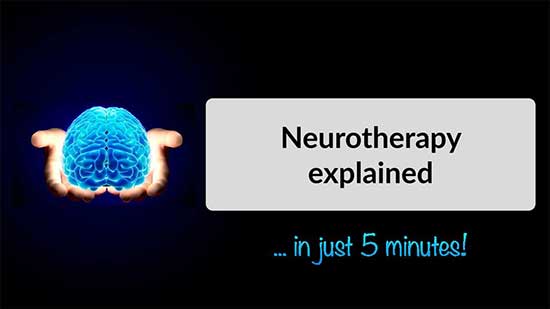
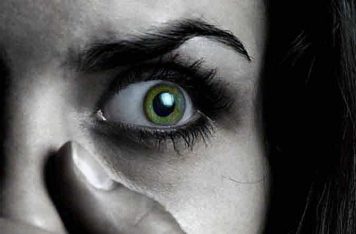
Before rushing into any treatment or therapy, it is crucial to collect some information first. The key questions we need answered are
• “What is the root cause of persistent Anxiety?” and
• “What is the most sensible Anxiety therapy?
When our Brain detects an imminent threat — such as an attacking lion, a tsunami or our mother-in-law — the alarm centre in our Brain generates a strong sense of fear. This fear response is designed to focus all our attention and energy to escape the immediate danger and survive.


For a dash to the nearest tree, the Brain activates the Body so we have • tense muscles, ready to run and climb • faster heartbeat to pump more blood • narrow arteries for higher blood pressure • increased sweat production for cooling • raised blood sugar levels and so on.
Once the threat has passed, the Brain needs to calm down Body and Mind, so that the much needed recovery can begin. Chill time. However, if the Brain is incapable of shutting down the fear-response completely, we experience the constant unease of Anxiety.

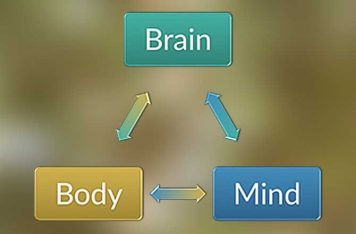
An incomplete shutdown of the Brain’s fear response in the absence of a threat, leads to persistent feelings of Anxiety, as well as a bunch of stress-related symptoms, which can affect all aspects of life (e.g. sleep, mood, focus, memory, mental sharpness, libido, digestion …).
What we experience as Anxiety, is the unwarranted activation of the “threat detection alarm” in our over-protective Brain. Modern scans can show us the Anxiety activity in the Brain that pesters the Body, irritates the Mind and sucks the joy out of our lives.
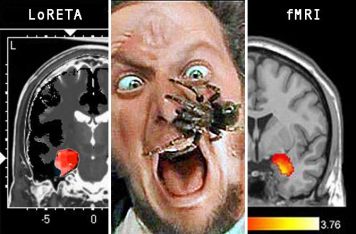
As the fear-response is designed to raise the fight-or-flight alarm, Anxiety “stresses” every system in the Body, Mind and Brain. Over time, this often leads to a number of so-called “medical conditions” and formal “psychiatric diagnoses”, even referrals to an “anxiety clinic” [Image Lightbox].
Anxiety is the most common Functional Brain Disorder in Australia. Every year in Australia, approximately 14% of the population (1 in 7) experiences an Anxiety Disorder, creating a greater Burden of Disease than Dementia, Coronary Heart Disease or Type 2 Diabetes [Image Lightbox].

Logically, there are three potential targets for Anxiety treatments: Body, Mind or Brain. Big Pharma likes labelling Anxiety as a “mental illness” and sells drugs for every single body symptom: Sleeping pills, pain killers, blood-presure meds … That’s good for business, not good for patients.
Long-term use of psychotropic drugs is not reasonable, because of risks, side effects, dependence and withdrawal problems. Therefore, it is often recommended to find a mental health clinic for some Counselling to help you cope with high levels of Anxiety. Is that good enough for you?

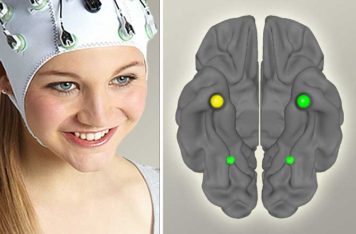
Unlike drugs, Neurotherapy targets the root cause of Anxiety Disorders by training the brain to fully shut off the fear-response in the absence of lions, tsunamis and mothers-in-law — thereby taking care of all secondary symptoms. It’s logical and has all the advantages of a reasonable solution.
• … it’s easy, everybody can do it
• … is amazingly powerful and effective
• … corrects the root cause
• … is a very natural, drug-free solution
• … has no serious risks or side effects
• … is fully evidence-based (And the sessions are even fun! )

Would you like
to learn more about …
Or would you rather
skip to the page that tells you …
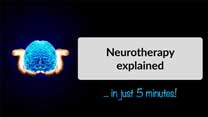
THE MIGRAINE REVOLUTION is a Scientific Patient Guide about the comprehensive rehabilitation of Migraine, a Functional Brain Disorder.
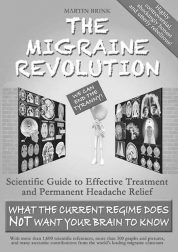
Neurotherapy Practice
32 Lawley Crescent
Pacific Pines — Gold Coast
Queensland 4226
Australia